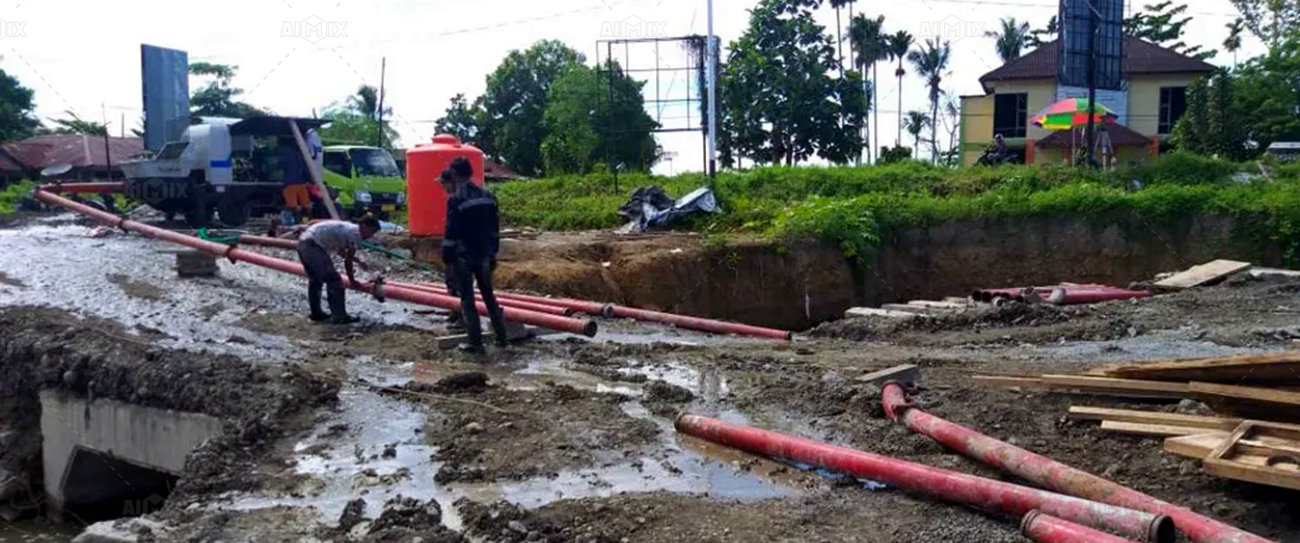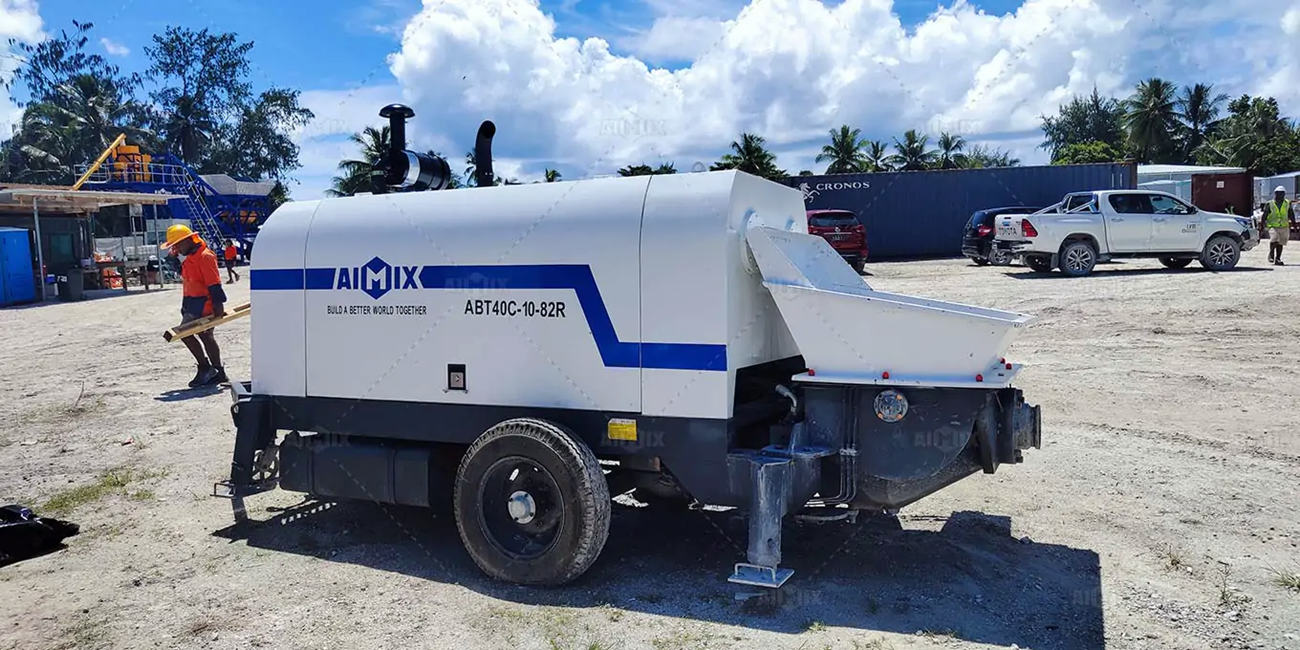
Understanding Indonesia’s Concrete Pump Industry
The Indonesian construction sector is experiencing unprecedented growth, with infrastructure development projects driving demand for pompa beton (concrete pumps). As a concrete pump company operating in this dynamic market, setting the right stationary concrete pump price requires careful consideration of multiple factors. This comprehensive 1,300+ word guide will explore:
✔ The current market landscape for pump concrete for sale in Indonesia
✔ Detailed cost breakdowns for manufacturing and selling pompa beton
✔ Competitive pricing strategies for stationary concrete pumps
✔ Value-added services that justify premium pricing
✔ Future trends impacting the concrete pump company business model
Whether you’re a manufacturer, distributor, or entrepreneur looking to enter the pump concrete for sale market, this guide provides actionable insights to optimize your pricing strategy.
Section 1: Market Analysis of Pompa Beton in Indonesia
1.1 Current Demand for Stationary Concrete Pumps
Indonesia’s construction boom has created strong demand for pompa beton equipment:
- Government infrastructure projects (IKN new capital, toll roads, dams)
- Private sector high-rise developments in Jakarta, Surabaya, and Medan
- Mining and industrial construction across Kalimantan and Sumatra
The stationary concrete pump price varies significantly based on:
- Pump capacity (30m³/h to 150m³/h)
- Brand reputation (international vs. local manufacturers)
- Additional features (remote control, automated systems)
1.2 Competitive Landscape Among Concrete Pump Companies
The Indonesian market features several types of suppliers:
| Supplier Type | Price Range | Market Share |
|---|---|---|
| International Brands (Schwing, Putzmeister) | 150,000-500,000 |
25% |
| Chinese Imports (Sany, Zoomlion) | 80,000-300,000 |
45% |
| Local Manufacturers | 70,000-250,000 |
30% |
This competitive environment means concrete pump companies must carefully position their pump concrete for sale offerings to stand out.
Section 2: Cost Components of Stationary Concrete Pumps
2.1 Manufacturing Cost Breakdown
Understanding production costs is essential for setting the right stationary concrete pump price:
Material Costs (50-60% of total cost):
- Steel frame and chassis (30-35%)
- Hydraulic systems (20-25%)
- Electrical components (10-15%)
Labor and Assembly (20-25%):
- Skilled welders and technicians
- Quality control inspectors
- Engineering and design teams
Overhead Costs (15-20%):
- Factory operations and utilities
- Research and development
- Administrative expenses
2.2 Additional Cost Factors for Pompa Beton
Several Indonesia-specific factors impact final pricing:
- Import duties (10-25% on foreign components)
- Logistics costs (shipping to archipelago nation)
- Certification requirements (SNI standards compliance)
- After-sales service network setup costs
Section 3: Pricing Strategies for Concrete Pump Companies
3.1 Cost-Plus Pricing Model
The most straightforward approach to setting stationary concrete pump price:
- Calculate total production cost (e.g., $100,000)
- Add desired profit margin (typically 20-35%)
- Adjust for market conditions
Example:
- Production cost: $100,000
- 25% margin: +$25,000
- Final price: $125,000
3.2 Value-Based Pricing Approach
Premium concrete pump companies can command higher prices by emphasizing:
- Extended warranties (3-5 years vs. standard 1 year)
- Local technical support (24/7 service teams)
- Training programs for operators
- Customization options for specific projects
3.3 Competitive Pricing Tactics
To effectively compete in pump concrete for sale market:
- Bundle pricing: Include free spare parts or maintenance
- Seasonal discounts: Align with construction cycles
- Trade-in programs: For customers upgrading equipment

Section 4: Value-Added Services That Boost Profitability
4.1 After-Sales Support Packages
Differentiate your pompa beton offerings with:
- Preventive maintenance contracts
- Remote monitoring systems
- On-site repair services
4.2 Financing Solutions
Make your stationary concrete pump price more accessible:
- Leasing options with monthly payments
- Bank partnerships for equipment loans
- Rent-to-own programs
4.3 Digital Tools and Technology
Modern concrete pump companies are implementing:
- IoT-enabled performance tracking
- Predictive maintenance algorithms
- Mobile apps for real-time monitoring
Section 5: Future Trends Impacting Pompa Beton Pricing
5.1 Government Regulations and Policies
Upcoming changes that may affect pump concrete for sale business:
- Stricter emissions standards for diesel engines
- Increased local content requirements
- Revised import duty structures
5.2 Technological Advancements
Innovations that could reshape stationary concrete pump price:
- Electric-powered pumps (lower operating costs)
- Automated pumping systems (reduced labor needs)
- Advanced material science (longer-lasting components)
5.3 Market Expansion Opportunities
Emerging segments for concrete pump companies:
- Small-scale contractors needing compact units
- Specialized applications (underwater concrete placement)
- Rental market growth
Key Takeaways for Concrete Pump Companies
- Comprehensive cost analysis is essential for setting profitable yet competitive stationary concrete pump price
- Value-added services allow premium pricing while improving customer satisfaction
- Market differentiation through technology and support creates sustainable advantage
- Future-proofing your pompa beton business requires anticipating industry trends
For concrete pump companies looking to succeed in Indonesia’s pump concrete for sale market, the key lies in balancing competitive pricing with exceptional value delivery. By implementing the strategies outlined in this guide, manufacturers and suppliers can optimize their pricing approach while building long-term customer relationships.
Final Recommendation: Regularly review your pricing strategy (at least quarterly) to account for material cost fluctuations, competitive moves, and changing customer needs in the dynamic pompa beton marketplace.